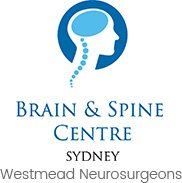How can back pain and sciatica be treated?
Back Pain
Back pain is a common cause of absence from work that affects approximately 80% of the American population, at different stages of their life. Back pain is more common in individuals between 35 to 55 years of age.
Lower back pain may be related to the functional impairment of different organs and tissues such as lumbar spine, intervertebral disc, ligament around the spine and disc, spinal cord and nerves, attached muscles, surrounding skin and internal organs. Pain in the upper back may be secondary to tumours in the chest, disorders of the aorta, and inflammation of the thoracic spine.
The common risks factors for back pain include:
- Mental stress
- Conditions such as pregnancy
- Age- elder people are more susceptible
- Behavioural disorders such as anxiety and depression
- Gender – more common in females as compared to males
- Obesity
- Smoking
- Arduous physical work
- Sedentary lifestyle
The common causes of back pain include:
- Stress on muscles and ligaments
- Lifting heavy weight
- Structural disorders such as ruptured disks, bulging disc, sciatica, arthritis, osteoporosis, and abnormal curvature of the spine
- Poor posture
- Trauma or infection of the spine
- Cancer of the spine
The diagnosis of back pain includes physical examination and a medical history of the patient. In some cases, imaging techniques such as X-rays, MRI scan, CT scan, bone scan and electromyography or EMG may also be ordered.
In a majority of cases, back pain is relieved without medication; by rest. In cases where rest alone is not very beneficial, the doctor may recommend the following treatment options:
- Medications such as painkillers and narcotics
- Physical therapy
- Cortisone injection
- Cognitive behavioural therapy (CBT)
- Complementary therapies such as acupuncture, acupressure, chiropractic and osteopathy
- Transcutaneous electrical nerve stimulation (TENS)
- Surgery employing required procedures such as fusion, artificial disk, discectomy and partial removal of vertebra
Sciatica
Sciatic nerve is the largest and longest nerve in the body. It originates in the lower back, runs along the hip and back of the leg and finally terminates in the foot. Sciatica is characterized by severe pain in the leg resulting from compression or damage to this nerve. The pain is usually present below the knee and may also extend to the foot. The intensity of pain varies from a mild pain to a sharp pounding pain. This may also be associated with numbness, tingling or burning sensation in the hip, leg and foot. The pain is usually intensified at night and exaggerated by coughing, laughing, sneezing, sitting and standing. Sciatica may also result in muscle weakness. In rare cases bladder and bowel function may also be affected (cauda equine syndrome) requiring emergency medical intervention.
Causes
Some of the common causes of sciatica include herniated disc, piriformis syndrome, hip injury or fracture and tumours of the lumbar spine. Other conditions of the lumbar spine that may cause sciatica include compression fracture, degenerative disc disease, spinal stenosis, spondylosis and spondylolisthesis. Poor posture, prolonged sitting, lack of proper exercise, smoking, diabetes and a fall can also lead to sciatica.
Diagnosis
Sciatica is a symptom rather than a disease and can be secondary to a number of conditions, some of which have been mentioned above. Diagnosis of the exact underlying cause is very crucial in determining effective treatment. Diagnosis of sciatica includes medical history along with a physical and neurological examination. Neurological examination helps to detect any signs of neurological injury and also evaluates muscle weakness, numbness and abnormal reflexes. Imaging tests such as X-rays may be required for severe and chronic sciatica pain. CT and MRI scans are more sensitive and may also be performed to identify changes in soft tissue such as intervertebral discs and nerves.
Treatment
Sciatica may often resolve by itself, without any treatment. Sometimes conservative treatment is recommended to reduce the pain and inflammation around the nerve. Conservative management of sciatica includes activity modification, ice pack application followed by heat treatment, pain medication, non-steroidal anti-inflammatory drugs, muscle relaxants, spinal injection and physical therapy. Back braces may also be recommended to support the back and keep the lower back still to reduce mechanical pain. Acupuncture may also be beneficial in a few cases. Spinal surgery may be indicated if the symptoms do not respond to a conservative approach.
Sciatica can recur after treatment. Regular stretching exercises and simple lifestyle changes such as bending from the knees while lifting weights can help to maintain a healthy spine and prevent sciatica.
Consult your doctor for any doubts or unanswered questions about sciatica or its treatment.




